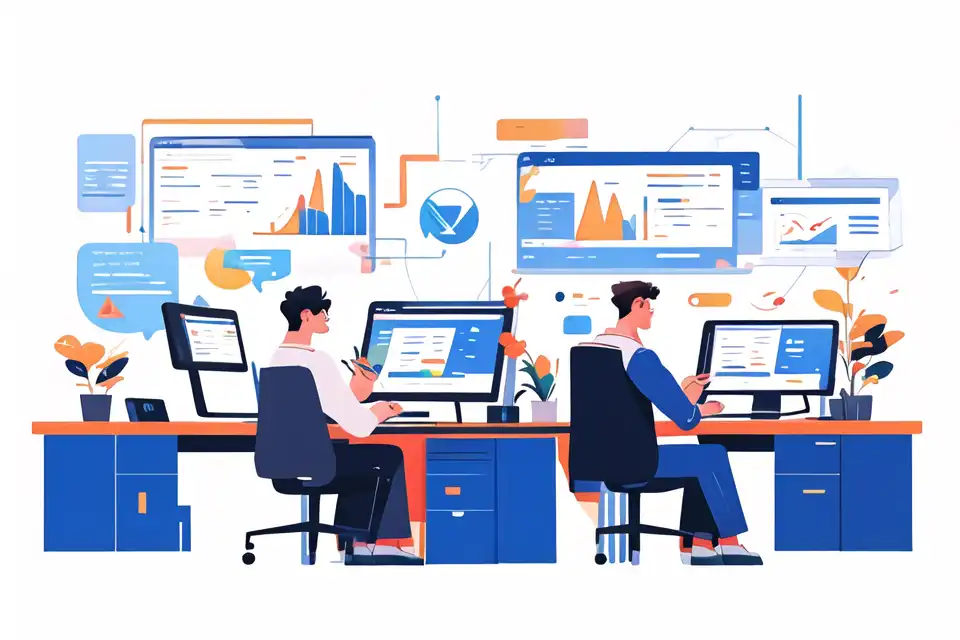Swot Analysis for Design and User Experience Teams
Unlock the power of swot analysis for design and user experience teams with our comprehensive guide. Explore key goal setting techniques and frameworks to drive success in your functional team with Lark's tailored solutions.
Try Lark for Free
In the realm of design and user experience, strategic planning plays a pivotal role in achieving optimal results. One of the powerful tools that can aid in this pursuit is the SWOT analysis. By delving into the intricacies of SWOT analysis for design and user experience teams, we can uncover its profound impact and the concrete steps to leverage its potential effectively. Let's embark on a comprehensive journey to explore the nuances of applying SWOT analysis in the context of design and user experience.
Leverage Lark OKR for enhanced goal setting within your team.
Understanding swot analysis
In essence, SWOT analysis is a strategic planning tool utilized to evaluate the Strengths, Weaknesses, Opportunities, and Threats relevant to a project or business endeavor. When it comes to design and user experience teams, the application of SWOT analysis involves dissecting the internal and external factors that can influence the success of their initiatives. By comprehensively understanding this analytical framework, these teams can gain insightful perspectives to steer their strategies towards fulfillment and innovation.
Benefits of swot analysis for design and user experience teams
Benefit 1: Enhanced Strategic Planning
Embracing SWOT analysis empowers design and user experience teams to embark on a journey of enhanced strategic planning. By meticulously identifying and analyzing their strengths, the teams can leverage their core competencies to drive innovation and excellence. Simultaneously, the recognition of opportunities offers a roadmap to expand their horizons by tapping into unexplored avenues and emerging trends, thereby enriching the strategic planning process.
Benefit 2: Risk Mitigation and Problem Anticipation
The application of SWOT analysis equips design and user experience teams with a proactive stance towards risk mitigation and problem anticipation. By acknowledging and addressing weaknesses and threats, teams can strategically navigate potential challenges, minimizing their impact on project deliverables. This, in turn, fosters an environment of anticipatory problem-solving, ensuring that unforeseen hurdles are met with swift and effective strategies.
Benefit 3: Alignment with User-Centric Approaches
SWOT analysis serves as an anchor for design and user experience teams to align their strategies with user-centric approaches. By discerning opportunities that resonate with user needs and aspirations, these teams can craft experiences that seamlessly integrate with user preferences, resulting in designs that are not only visually appealing but also functional and user-friendly.
Steps to implement swot analysis for design and user experience teams
Step 1: Internal Assessment (Strengths and Weaknesses)
To initiate SWOT analysis, design and user experience teams must embark on a thorough internal assessment. This involves identifying and evaluating their inherent strengths, which can encompass expertise in specific design disciplines, knowledge of emerging technologies, or unique user experience insights. Simultaneously, honest introspection is vital to recognize and address weaknesses, such as resource limitations, skill gaps, or process inefficiencies.
Step 2: External Assessment (Opportunities and Threats)
Conducting a comprehensive external assessment is imperative for design and user experience teams to identify potential opportunities and threats. This entails analyzing market trends, technological advancements, and user behavior to uncover potential avenues for growth and development. Additionally, the identification of threats, such as changing consumer expectations or competitive landscape shifts, helps in fortifying strategies to mitigate adversities effectively.
Step 3: SWOT Matrix Generation
Following the assessments, the amalgamation of the internal and external factors culminates in the creation of a SWOT matrix. This matrix visually represents the identified strengths, weaknesses, opportunities, and threats, providing a structured framework for design and user experience teams to derive actionable insights that navigate their strategic directions.
Step 4: Strategy Formulation and Implementation
Armed with the insights from the SWOT matrix, design and user experience teams proceed to formulate and implement strategies aligned with their identified strengths and opportunities. This involves devising actionable plans to leverage strengths and seize opportunities while actively addressing weaknesses and mitigating threats to ensure effective project execution.
Step 5: Monitoring and Review
The journey of SWOT analysis is incomplete without the critical aspects of monitoring and review. Design and user experience teams must continuously monitor the performance of their strategies, seek feedback, and review the efficacy of their approaches. This cyclical monitoring and review process ensures continual improvement and adaptation based on evolving internal and external dynamics.
Learn more about Goal Setting for Teams with Lark
Common pitfalls and how to avoid them in design and user experience teams
Pitfall 1: Overlooking Data Quality
One common pitfall that design and user experience teams may encounter in the SWOT analysis process is the oversight of data quality. Insufficient or unreliable data can lead to skewed assessments and suboptimal strategic decisions. Therefore, ensuring the integrity and reliability of the data underpinning SWOT analysis is paramount to derive accurate and actionable insights.
Pitfall 2: Inadequate Stakeholder Involvement
Effective stakeholder involvement is the bedrock of a successful SWOT analysis for design and user experience teams. Inadequate engagement with key stakeholders can result in one-sided perspectives, limiting the comprehensiveness and accuracy of the analysis. Proactive collaboration with stakeholders ensures a holistic evaluation of internal and external factors, enriching the strategic insights derived from SWOT analysis.
Pitfall 3: Ignoring Continuous Analysis and Adaptation
A critical pitfall for design and user experience teams is the tendency to treat SWOT analysis as a one-time activity. Failing to embrace continuous analysis and adaptation can result in stagnant strategies that are not attuned to the dynamic landscape of design and user experiences. By integrating ongoing analysis and adaptation, teams can recalibrate their approaches in response to evolving trends and challenges.
Learn more about Goal Setting for Teams with Lark
Leverage Lark OKR for enhanced goal setting within your team.








